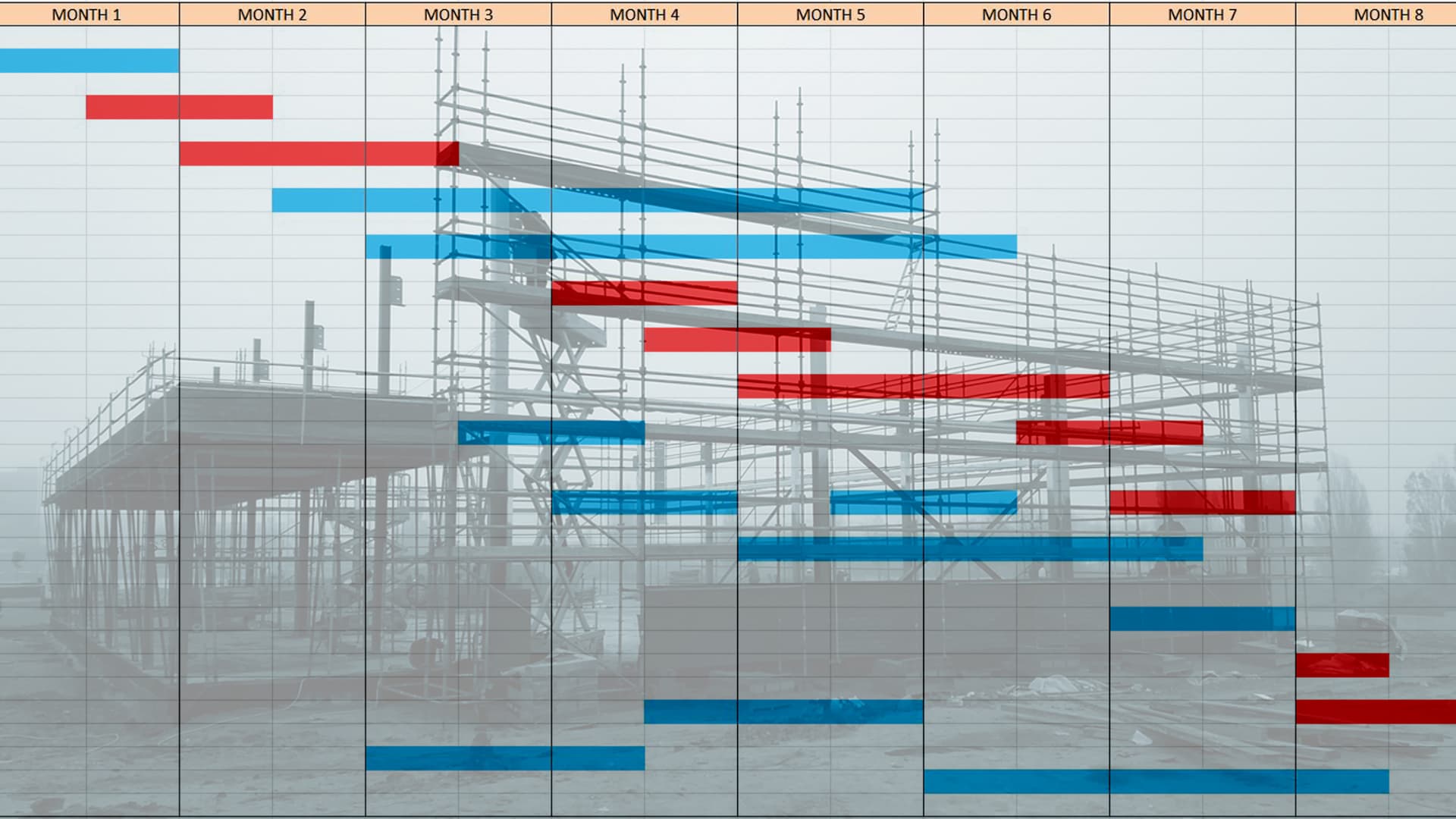Blogs
A construction project complex? It doesn’t have to be!
Construction projects are often large in scope and budget and often take a long time. The situation in which a construction project takes place is also often complex. As a result, construction projects are regularly managed in a complex manner. Sometimes even more complex than necessary.
A construction project doesn’t have to be complex
However, a construction project doesn’t have to be complex. Naturally, all the variables present introduce a certain level of complexity. But precisely because of that complexity, there are certain standards and practices in construction. These ensure that projects proceed in a structured manner. This is why the phases in construction projects are quite well-defined.
7 Standard Phases in Construction Project Management
To better understand these standard practices, we will explain the standard phases in construction project management here.
1. Project Initiation Phase
Construction projects usually start in a very general manner with an assignment; this is the initiation phase in which you define your assingment. You realize that a project might be coming up, and you sit down with your client. In these phases, you arrive at a concrete assignment and an initial set of parameters within which the project must be realized.
2. Definition Phase
The next phase is the definition phase. Here, you establish a program of requirements that sets clear objectives and makes the project more concrete.
3. Design Phase
The program of requirements then forms the basis for your design phase. In sub-phases within this phase, you iteratively progress towards a clear design. Think of phases like structural design, preliminary design, final design, and technical design. The outcome of this process is a fully developed design.
4. Contracting Phase
There are many different contracts involving advisory, design, and execution parties. The procurement and tendering processes required for the project are often carried out in parallel with other phases as much as possible. The process that typically takes the most time is the tendering of the execution party. This process often occurs based on a design.
5. Construction Phase
This comprehensive design serves as the foundation for the construction phase. In this phase, the design is actually brought to life.
6. Aftercare Phase
In the aftercare phase, you address any outstanding issues that arise from the completion.
7. Operational Phase
In this phase, you put the design into operation, and then the regular management and maintenance process comes into effect.
Tip 1: Compressing Phases Not Always a Good Choice
Construction projects often take a long time, so construction project managers often look for ways to expedite them. In many cases, people choose to compress phases. While that can be a solution, it also makes things more complex. When you merge phases, it affects various interconnections.
We often observe that teams attempt to compress the definition and design phases. However, for risk management reasons, we work with separate phases. Each design step takes your project a step further, adds more details, and provides more certainty about the schedule and costs. And, of course, about the risks too.
Compressing leads to larger design steps being taken all at once. But that also comes with greater risk. Thus, you might realize afterward that compressing ultimately results in the work no longer fitting within your parameters. And then, the time saved comes with greater risks.
Consider your design in relation to the necessary permit, or a bidding process that impacts your design. Adjusting one aspect results in changes elsewhere in the project. When you compress phases, it means more things run in parallel. This increases the risks in each individual phase. So, compressing might not always be a logical choice.
Tip 2: Involve All Disciplines in Decision-Making Upfront
The advice is, therefore, to think carefully about the considerations you make at the beginning of a project and to involve all disciplines in that process. So, approach your project not just from the technical side or just from the project management side, considering planning or costs alone.
Instead, make decisions collectively with your entire team about the impact of certain choices. Once everyone from their respective disciplines agrees and your client is on board, then you decide.
Tip 3: Let Experience Be Your Guide, But Stay Open-Minded
Experience with construction projects is immensely valuable, especially if you’ve tackled a similar project before. When a construction team is well-coordinated and has relevant experience, that naturally comes with significant advantages. Because it means you often go through the practical aspects from A to Z many times and you can better anticipate challenges. It’s easier to assess risks.
However, there’s also a downside to experience. It can lead to a certain tunnel vision in how you approach a project. If you’ve done a project in a particular way nine times before, you’re likely to do it the same way the tenth time too. Yet, on that tenth project, there might be different perspectives. There might be factors that ideally alter the approach to the project.
Experience is both a gain and a risk. This is why it’s crucial to continually evaluate as you progress through a construction project. What’s going well, and what can be improved next time? And how do you anticipate those improvements in the future?
Simjo Makes Construction Project Management Simple
Because we are also active in project management in the construction sector, we noticed that management could be simplified. Eventually, we developed Simjo, which simplifies construction project management. We see this impact in two areas.
- Firstly, it covers the Triple Constraint, the interplay between scope, time, and money. This connection is fully integrated into our software, so we subtly ensure that all your project data is linked to scope, time, and money.
- Additionally, we’ve designed the software to be as straightforward as possible. This means that users can start using the software much more quickly and easily, without the need for training.
Simjo saves time and enhances the reliability of control information
Our clients and users appreciate these elements and now see the benefits. It saves them a lot of time, and the data and control information are also much more reliable. Users (ourselves included) can actually draw conclusions from it.
Users are also increasingly recognizing that the construction industry is undergoing a massive transformation. This has been happening for some years with Building Information Management (BIM), which demands more digitization. But especially in the present times, when generative AI is playing an increasingly significant role, we see that the quality and possibilities of data are becoming more crucial.
Read also: The Future Role of AI in Construction Project Management
Do you want to discover how Simjo supports your construction project?
Simjo is project management software specially developed for project managers and project teams in construction. Check out how Simjo simplifies your work. Or sign up as a Simjo tester. We’ll keep you updated about the development of Simjo, and you’ll be among the first to use new functionalities.









